#mm/lb concept
Explore tagged Tumblr posts
Text

/ Ju j j just u wait I learn perspective, it'll be OVER- my vision of m.octezuma and the ocelomeh riding all black cool fuckass futuristic motorcycles will be real just u wait just u wai t
#;ooc#ooc#LIKE LIKE LIKE- WITH REALLY COOL HELMETS U CANT SEE ANYTHING FROM THE OTHER END-#AND AND AND THEY WERE BROUGHT BY T.EZCATLIPOCA NATURALLY#i can SEE him bringing fuckass modern weapons and being like; 'got yall some new toys'#f.go t.ezca canonically finds modern weapons entertaining#i just know he loves tinkering with them like have u seen his gun/axe??#and have u seen the og's sprite of mocte's guns? those are NOT regular guns#I JUST KNOW ITTTTTTTTTT#MM M M MM MY VISION-#i think its a character trait that makes sense for t.ezca like; to linger between modern and older things and mixing them#its once again /and im repeating myself again/; the concept of duality#and m.octe naturally follows t.ezca's steps so it makes SENSE he also has these futuristic like weapons#even if he was summoned independently of his role in the lb of taking t.ezca's place#he is still his god; so he would follow him#which is also why at the end it affected him so much to face the truth- but thats another hole i wont get into#if m.octe/i.zcalli has no fans then im no longer in this world
3 notes
·
View notes
Text
Cancelled Missions: Gemini Saturn V
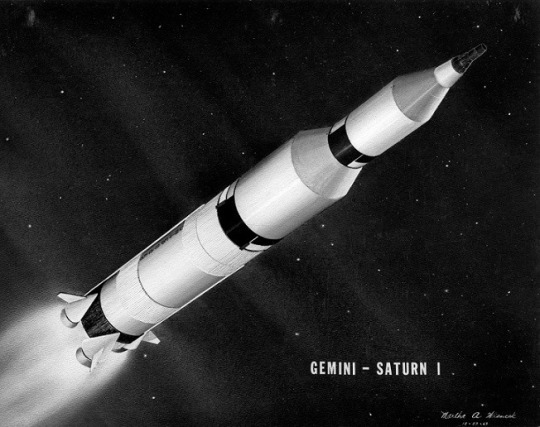
-Concept Art, however this has a typo, as this is clearly the Saturn V.
"American manned lunar orbiter. In l LP late 1964 McDonnell, in addition to a Saturn IB-boosted circumlunar Gemini, McDonnell proposed a lunar-orbit version of Gemini to comprehensively scout the Apollo landing zones prior to the first Apollo missions.
Status: Design 1964. Gross mass: 11,182 kg (24,652 lb).
The lunar orbit version required an Agena stage to provide the delta-V for lunar orbit insertion and trans earth injection. The 1.52 m-diameter Agena was enclosed in an inverted conical fairing to both transmit thrust loads to the Gemini and provide thermal protection during the coast to the moon.
Alternatively, a propulsion module based on a repackaged Apollo Service Module propulsion system, as had been proposed two years earlier for a lunar-landing version of Gemini, could be used. This raised the translunar injection mass of the spacecraft to 11,182 kg, well above the capability of a Saturn IB or Titan III-C, but only a quarter that of a Saturn V. The launch vehicle was unspecified, but could only have been a Saturn V used on an early test mission. The mission profile would have involved a 68 hour flight from low earth orbit to lunar orbit, a 24 hour lunar mapping mission in a 10 nm x 80 nm lunar orbit, and a 68 hour return flight. The scientific equipment would consist of a modest camera array installed in the nose of the spacecraft. This consisted of a long focal-length telescope, to which were attached two narrow-field stereo mapping cameras, a wide field mapping camera, a panoramic camera, and two 16 mm film cameras. The film was not accessible by the astronauts, being stored in a film vault shielded against radiation in the nose of the spacecraft. The camera compartment would protrude from the stub nose of the Gemini after parachute deployment.
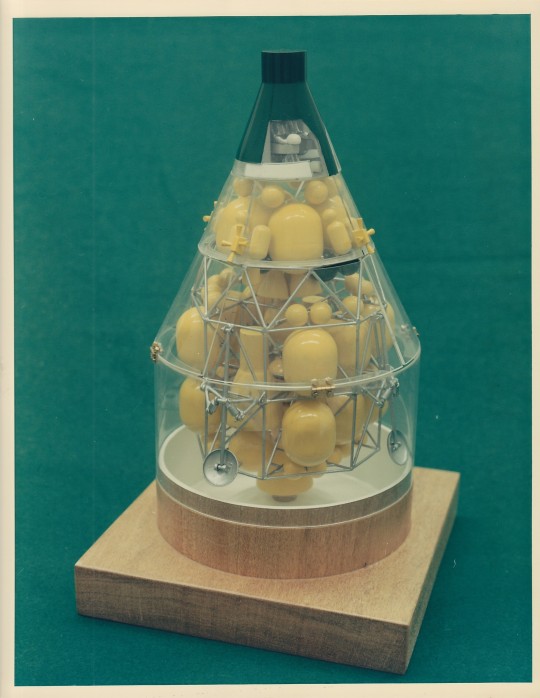
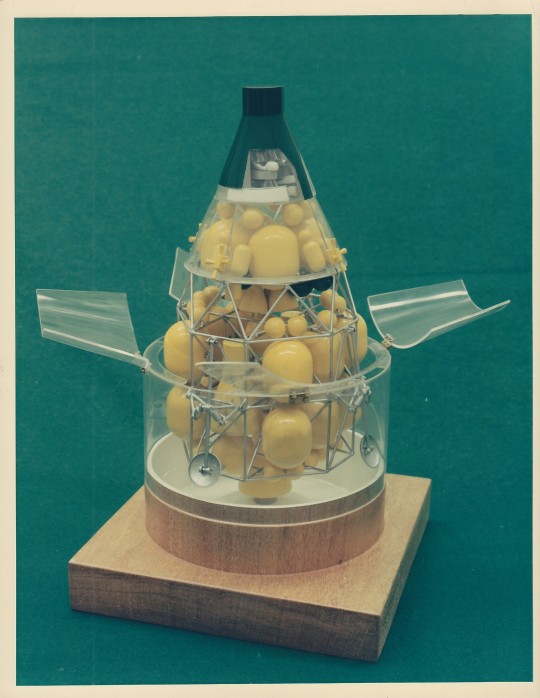
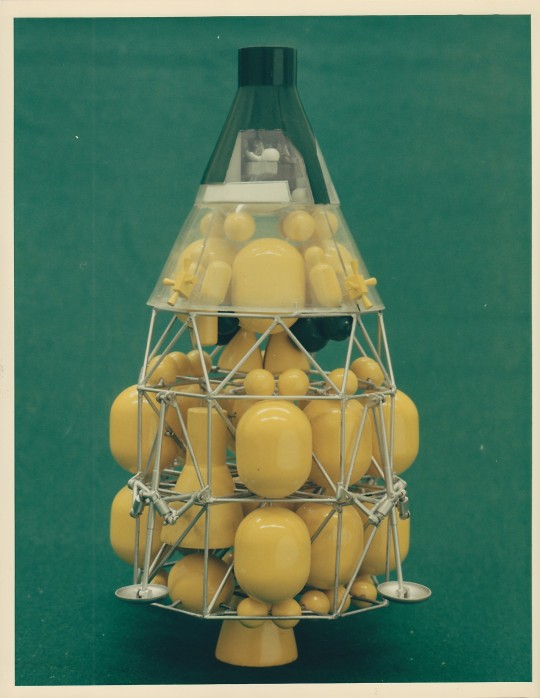
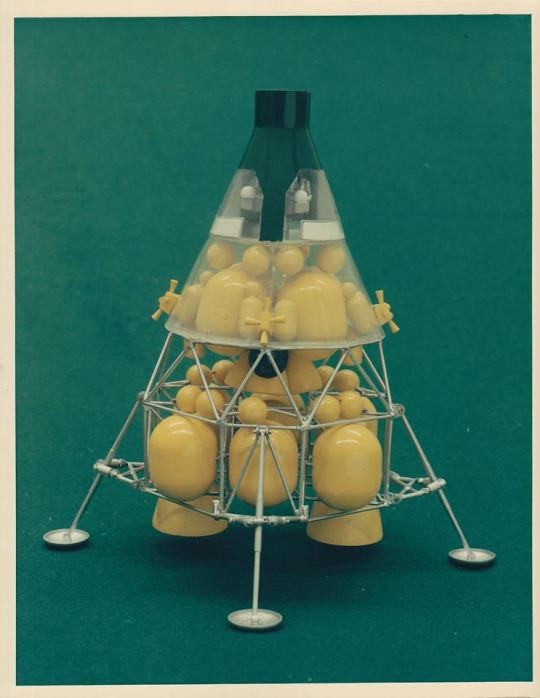
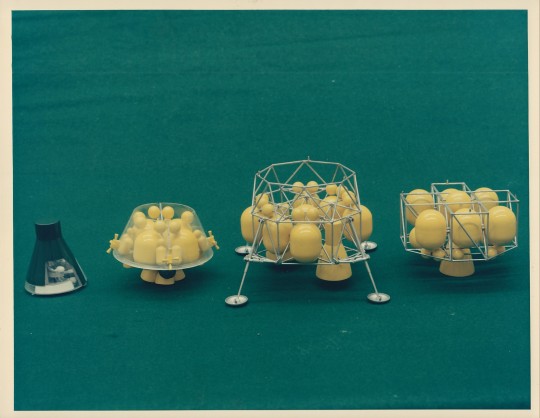
The manned portion was the same as the circumlunar version, a modified earth-orbit Gemini. The aft modules would be retained, but with the retrorockets removed. The retro module space would be used to install Apollo-type lunar distance communications, navigation, and test equipment. Deployable DSIF omni-directional and parabolic antennae would deploy from the aft modules to support lunar-distance communications. To handle re-entry from lunar distances, several modifications were necessary. The capsule's heat shield would be beefed up, and the Rene 41 corrugated shingles of Gemini's skin would be replaced with ablative shingles. The load of attitude control propellant for the capsule's reaction control system was substantially increased. Additional strap-down gyros and solar sensor packages would be added to provide navigation system redundancy. The ejection seats would be deleted and a Mercury-style launch escape tower added. The then-planned Rogallo wing recovery system would be used to glide to the Gemini to a runway landing on US territory after return from the moon. To handle the scientific payload, a camera compartment was added to the nose below the parachute/Rogallo wing housing. The Gemini spacecraft modified in this way had on on-orbit mass of 3955 kg as compared to the 3207 kg of the earth-orbit version.
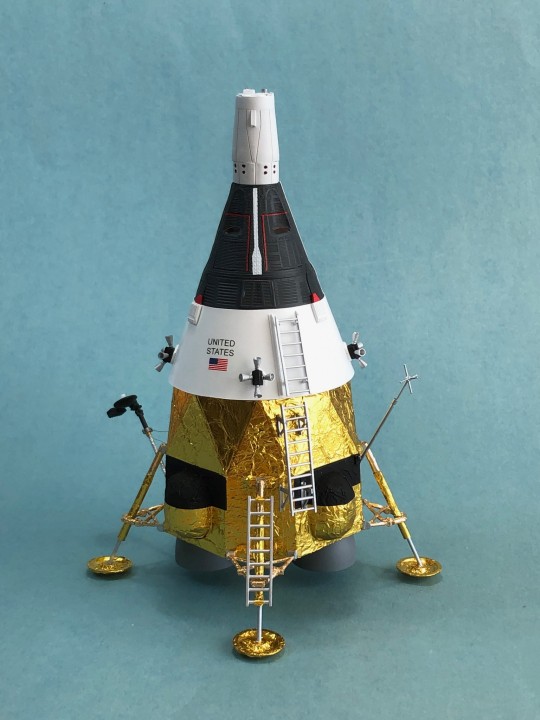
Crew Size: 2. Habitable Volume: 2.55 m3."
-information from Astronautix.com: link
source, source, source
#Gemini Saturn V#Gemini#Gemini Capsule#NASA#Gemini Program#Project Gemini#Saturn V#Rocket#concept art#artwork#cancelled#Lunar Gemini#1964#preliminary design#Cancelled Mission#my post
65 notes
·
View notes
Text
oc moment 🤯🤯: sigge andersson lore
- swedish-american (?) & 19 years old (turning 20)
- birthday is jan 7th
- moved to america when he was 11 and retains a bit of an accent, most noticeable on words with v's
- one of Those Guys who claims to be a strong, nordic man (can't lift a 5 lb weight)
- metalhead, loves traditional second wave black metal, as well as raw black, folk black, and death metal - also really into dungeon synth, like grausamkeit... he's a b.s.o.d fanboy, unironically
- also likes mainstream metal, particularly megadeth, but is incredibly embarrassed about it and will never admit it - hides a megadeth shirt deep in his closet
- doesn't shower. like, genuinely does not shower. he has to be forced to shower by his parents when the smell becomes unbearable, usually once every month and a half
- when he DOES shower, he uses those 10-in-1 body washes that smell like emotions and concepts like "wrath" and "swagger"
APPEARANCE:
- long dirty blond hair; looks lighter in the sun, he swears he's a true blond
- hair is incredibly greasy - when he runs a hand through it, his fingers come back shining
- soulful brown eyes like a wet deer in the grass
- YELLOW TEETH... raw gums...
- wears a stretched, clunky septum occasionally (3mm to 4 mm)
- scrawny. no muscle to be seen, he is genuinely fragile and sad
- tall-ish, 5'9 (swears he's 6")
- nose is a bit hooked
- corpse paint design is blocky and squared off, like euronymous'
- occasionally wears those black witch hats (inspired by b.s.o.d...)
- typically seen in a handpainted band tee (typically grausamkeit or carpathian forest), loose black jeans and worn out combat boots (reaching about calf height)
- covers up acne and other insecurities (like his nose) with corpse paint, almost always seen with it unless at home
PERSONALITY, LORE & MANNERISMS:
- asocial, says it's by choice (lie)
- thinks no friends = trve kvlt
- lonely, of course, and WANTS friends but his interests and general standoffish demeanor put off others
- internally homophobic... refuses to admit his attraction to men, despite drooling over any man that looks at him for .5 seconds
- LOSER. chronic reddit user; downvotes everyone who doesn't echochamber his thoughts
- plays guitar. badly. knows one song (master of puppets by metallica) and brags about it constantly - knows nothing of music theory and says he doesn't need to know because tabs exist
- snus user and is really pretentious about it - "you SMOKE? so you want to ruin your lungs forever and smell like shit..." (while damaging his gums)
- is the type of person in tiktok comment sections to make suicide jokes under a vid of a happy couple
- autistic & bpd
- autism primarily manifests in "social awkwardness," lack of understanding of social cues, and intense special interests (metal); stims by headbanging
- bpd is primarily in unstable reactions towards others, impulsivity, cutting, suicidal ideation, and dependency in romantic relationships
- note: sigge has not been in any romantic relationships (besides a fake one when he was 11 - a girl asked him out as a joke and he brought her handpicked flowers for the next few days) - this is just how he would act IF in a legitimate romantic relationship
11 notes
·
View notes
Link
In the coming years, NASA plans to send several astrobiology missions to Venus and Mars to search for evidence of extraterrestrial life. These will occur alongside crewed missions to the Moon (for the first time since the Apollo Era) and the first crewed missions to Mars. Beyond the inner Solar System, there are ambitious plans to send robotic missions to Europa, Titan, and other “Ocean Worlds” that could host exotic life. To accomplish these objectives, NASA is investing in some interesting new technologies through the NASA Innovative Advanced Concepts (NIAC) program. This year’s selection includes solar-powered aircraft, bioreactors, lightsails, hibernation technology, astrobiology experiments, and nuclear propulsion technology. This includes a concept for a Thin Film Isotope Nuclear Engine Rocket (TFINER), a proposal by senior technical staff member James Bickford and his colleagues at the Charles Stark Draper Laboratory – a Massachusetts-based independent technology developer. This proposal relies on the decay of radioactive isotopes to generate propulsion and was recently selected by the NIAC for Phase I development. As their proposal paper indicates, advanced propulsion is essential to realizing several next-generation mission concepts. These include sending a telescope to the focal point of the Sun’s gravitational lens and a rendezvous with a passing interstellar object. These mission concepts require rapid velocities that are simply not possible with conventional rocketry. While lightsails are being investigated for rapid-transit missions within the Solar System and Proxima Centauri, they cannot make the necessary propulsive maneuvers in deep space. A collage of illustrations highlighting the novel concepts proposed by the 2024 NIAC Phase I awardees. Credit: (clockwise, from upper right) Benner/Zhang/McQuinn/Romero-Calvo/Hibberd-Kennedy/Carpenter/Bickford/Romero/Calvo/Cabauy/Landis/Rothschild/Ge-Cheng Zha/NASA Nuclear concepts that are possible with current technology include nuclear-thermal and nuclear-electric propulsion (NTP/NEP), which have the necessary thrust to reach locations in deep space. However, as Bickford and his team noted, they are also large, heavy, and expensive to manufacture. “In contrast, we propose a thin film nuclear isotope engine with sufficient capability to search, rendezvous, and then return samples from distant and rapidly moving interstellar objects.” they write. “The same technology allows a gravitational lens telescope to be repointed so a single mission could observe numerous high-value targets.” The basic concept is similar to a solar sail, except that it relies on thin sheets of a radioactive isotope that uses the momentum of its decay products to generate thrust. As they describe it, the baseline design incorporates sheets of the Thorium-228 measuring about ~10 micrometers (0.01 mm) thick. This naturally radioactive metal (typically used in radiation therapy) undergoes alpha decay with a half-life of 1.9 years. Thrust is produced by coating one side with a ~50-micrometer (0.05 mm) thick absorber layer, forcing alpha particles in the direction opposite of travel. The spacecraft would require 30 kg (66 lbs) of Thorium-228 spread over an area measuring over 250 m2 (~2700 square feet), providing more than 150 km/s (93 mi/s) of thrust. For comparison, the fastest mission that relied on conventional propulsion was the Parker Solar Probe (PSP), which achieved a velocity of 163 km/s (101 mi/s) as it reached the closest point in its orbit around the Sun (perihelion). However, this was because of the gravity-assist maneuver with Venus and the pull of the Sun’s gravity. The advantages of this system include simplicity, as the design is based on known physics and materials. It also offers scalability to accommodate smaller payloads (like sensors) or larger missions (like space telescopes). A single conventional launch vehicle could insert several of these spacecraft into a solar escape trajectory, requiring an escape velocity of 42.1 km/s (26 mi/s). The thrust sheets can also be reconfigured to enable thrust vectoring and spacecraft maneuvers, meaning that the spacecraft could scout for future missions once it reaches deep space. A plutonium-238 ceramic pellet glowing red hot. Credit: Los Alamos Laboratory This includes telescopes bound for the Solar Gravitational Lens’ (SGL) focal point and missions that will rendezvous with interstellar objects (ISOs) and possibly return samples to Earth for analysis. Speaking of which, the spacecraft would have the spare capacity to rendezvous with an ISO on its own and return samples. The natural decay of the sheets can also be harnessed using a layer of thermoelectric materials (or Peltier Tiles) to generate excess electrical power of about 50 kW at 1% efficiency. A layer of beta-particle emitting material could also be added to neutralize the alpha radiation and “induce a voltage bias that directs exhaust emissions and/or exploits outbound solar wind.” They also note how the concept can be designed with multiple “stages” equipped with Actinium-227 (or other isotopes with a longer half-life), leading to higher velocity over extended mission lifetimes. Similarly, a modified version that relies on Thorium-233 can harness the Thorium fuel cycle – a cascading isotope decay that eventually produces Uranium-232 – that will result (they claim) in an increased performance of about 500%. Clearly, the proposed technology presents many opportunities for future development and could be used to execute several mission profiles. These missions align with NASA’s vision for the coming century, which includes sending spacecraft to study ISOs up close, discover habitable planets in neighboring star systems, conduct crewed missions beyond the Earth-Moon system, and search for life on other celestial bodies. Further Reading: NASA The post NASA Invests in New Nuclear Rocket Concept for the Future of Space Exploration and Astrophysics appeared first on Universe Today.
1 note
·
View note
Text
Ronnie Bell Following
Mitsubishi Ki-2
The Ki-2 was a low-wing cantilever monoplane with corrugated metal alloy decking and twin fins and rudders, and had fixed divided landing gear. It was powered by two 435 kW (583 hp) Nakajima Kotobuki radial engines. Maximum speed was 225 km/h (140 mph), normal range 900 km (560 mi) and maximum take-off weight 4,550 kg (10,030 lb). Single 7.7 mm (.303 in) machine guns were mounted in a semi-enclosed nose gun turret and a dorsal position, and maximum bomb load was 500 kg (1,100 lb).
The Ki-2 was, like its stable mate the Mitsubishi Ki-1, based on the Junkers S36 first flown in 1927. Militarized into the Junkers K37 by Junker's Swedish subsidiary AB Flygindustri at Limhamn near Malmö in Sweden, it was able to reach altitudes not reachable for the fighter aircraft of 1927. However, as soon as 1930 this advantage was lost due to British developments such as the Bristol Bulldog fighter, and Junkers was not successful in selling the design. However, in 1931, representatives of the Mitsubishi Nainenki K.K. in Japan visited the Limhamn facilities to study some of the military conversions of Junkers aircraft, and purchased the sole K37 prototype S-AABP (ex D-1252 S36-prototype) as well as all development papers and a signed a contract for licensed production.
The K37 prototype was brought to Japan and tested in combat in the Manchurian Incident of 1931, following which the Imperial Japanese Army Air Force authorized Mitsubishi to produce both heavy and light bomber variations. The heavy bomber version, the Ki-1, was much larger than the original Junkers K37 and first flew in August 1932.
The light bomber version, the Mitsubishi Ki-2, flew for the first time in May 1933. It was much smaller than the Ki-1 and was much closer to the original K37 concept. While the fuselage was redesigned by Mitsubishi, the wings were kept unchanged, except for additional ailerons. Mitsubishi built total of 113 aircraft and an additional 13 aircraft built by Kawasaki from 1933-1936.
Via Flickr
12 notes
·
View notes
Text
The Definitive Guide to Equipment Packages Perfect For Garage Gyms And Home Gyms
Quality 190 psi 28. 5 mm Rogue Ohio barbell with 230 lb of bumper plates with high-quality Rogue locking collars. Strong single piece cast kettlebells, (1) 35 lb and (1) 53 lb. Wood Rogue rings, med ball, ab mat and speed rope. Only includes 230 pounds of bumper plates, advanced professional athletes will need to invest in additional weight.
This set contains a couple of CrossFit devices extras like a 53 lb Rogue kettlebell, set of wood gymnastic rings and a Rogue medicine ball. This little set is perfect for those who have a home fitness center established, and want to update the barbell while snagging a few additionals at the same time.
5 mm Rogue Ohio barbell with 160 lb of Rogue bumper plates. One single cast strong iron 53 pound Rogue kettlebell. Set of premium Rogue wood gymnastic rings. Just includes 160 pounds of bumper plates. The majority of athletes will need more weight. Consists of spring collars instead of the Rogue locking collars.
The Of Top 9 Best Crossfit Equipment Packages For Home Gym 2020
If you are brand-new to CrossFit, keep https://www.washingtonpost.com/newssearch/?query=home gym equipment in mind, we were all there once. I understand what it's like your first day, your very first month and even what it resembles before you initial step through the doors of the box. Get a concept of what your first day will be like, and some fantastic tips for novices in this beginners guide to CrossFit I wrote simply for folks like you - indoor bikes.
If you are looking for some excellent CrossFit exercises, have a look at my collection of best CrossFit workouts to do from home. There are a number of exercises there that use little to no equipment so you can begin today. Keep in mind The CrossFit WOD is constantly published to the CrossFit.
It's a terrific resource. IMO, a barbell and bumper plate set is vital CrossFit health club devices. Take a look at the best barbells and best Olympic weight sets here. Do not forget to grab a set of CrossFit Friendly bumper plates. Would like to know more about how to select the finest bumper plate? Then keep reading! https://docs.google.com/document/d/1lmS_uIVUyRlOr5yWMP1WQpI7KJ4Kf_4zfc7V-J2mdjk/edit The Barbell! The barbell affects every lift.
Top Guidelines Of Garage & Home Gym Packages - Gym Equipment Bundles 2020
The one thing you do not wish to be stingy with is the barbell. capacity spin bend/flex diameter sturdiness knurl texture quality materials/coating maintenance the guarantee Considering that CrossFit integrates different lifts, crossfitters generally desire a multipurpose bar without any center https://1drv.ms/f/s!AgFJt1cqb930cVsMtesEFaYxVJo knurling. This bar will have dual markings, a bare center, good knurl, good whip and be coupled with barbell collars that do not ride or move when dropped.

I am not going to get into the ins and outs of barbells here, but if you want an in-depth take a look at the distinctions in between barbells for CrossFit and barbells for other sports like weight lifting or powerlifting, I blogged about that here. The barbell is the most important aspect to consider when selecting the very best CrossFit bundle for your gym, and it is the focal point of the CrossFit home gym - stairmaster gauntlet.
They have a consistent diameter, however differ in density. So why are they utilized in CrossFit instead of normal iron weight plates? Due to the fact that CrossFitters are known for lifting to their max, to failure, and after that dropping the weights. The consistent size and rubber coating trigger less damage to the floor, barbell and plates themselves, not to mention less sound than dropping standard plates.
60 Best Crossfit - Garage Gym Images - Questions

Usage bumper plates if you drop the weights. If you are thinking about including standard weight lifting as an addition to your CrossFit routine, take an appearance at this guide I developed that shows you the finest weight lifting equipment for home - glute machine. I extremely motivate any person who is constructing a weight lifting health club, including a CrossFit fitness center, to set up a rack or cage for security functions.
It can also include variety, increase the number of exercises you can do, and supplies a built-in pull up bar. I personally think a rack or cage makes a house health club look more complete and professional also, making it a place you take pride in and wish to hang out in.
If you wish to see more check out this list of important CrossFit devices for house or garage gym so you do not miss any critical CrossFit devices in your house box. Every CrossFit health club requires a cardio alternative. That's what the Metcon is all about, right? While you can certainly do cardio without costly devices, it's great to have a "go-to" piece like an air bike or rower to make preparing the workout easy.
1 note
·
View note
Photo







First Look: The Audi AI:Trail Quattro Concept
Audi is completing its quartet of visionary vehicles by showcasing a forward-looking electric off-roader at the 2019 Frankfurt Motor Show. The Audi AI:Trail Quattro, a concept for sustainable mobility off the beaten track, is one of four use case vehicles projecting Vorsprung durch Technik into the future.
The four-seater Audi AI:TRAIL quattro combines the capacity for automated driving with off-road capabilities. The glass surrounding the cabin extends all the way to ground level, providing unrivaled all-round visibility. The battery capacity ensures sufficient range even away from dense networks of charging stations.
The “Trail” part of the name evokes the idea of exploring nature. That is why there are no big screens on board for streaming TV series or videoconferencing; instead, broad glass surfaces provide a clear view of the surroundings.
Technology that’s plain to see – the exterior
With an exterior length of 4.15 meters and a width of 2.15 meters, the brawny Audi AI:TRAIL’s potential away from paved roads is immediately apparent. The roof height of 1.67 meters and the enormous 22-inch wheels with 850 mm tires hint at the vehicle’s excellent off-road capabilities even when it is standing still. With a ground clearance of an impressive 34 centimeters, it can ford through water more than half a meter deep.
On rough, rocky terrain, this architecture provides plenty of agility without the battery unit integrated in the floor coming into contact with the ground.
The cabin itself is an extensively glazed space surrounded by polygonal shapes, with room for up to four people. One characteristic feature—and one that indicates the vehicle’s kinship with Aicon and AI:ME—is the protruding ridge halfway up the side windows. This line continues to both the front and rear and acts as a waistline uniting the entire body in one monolithic whole.
With the electric drive system arranged around the axles and the battery in the floor, there is no need for overhanging sections or separate attachments for the motor or batteries. Something else that the four visionary Audi vehicles at IAA 2019 will be demonstrating is that the one-box design is becoming the gold standard for the age of the electric vehicle.
Light weight and maximum body stiffness are, of course, important technical objectives for off-roaders in particular. That is why the body of the Audi AI:TRAIL is made of a mixture of high-tech steel, aluminium and carbon fiber. As a result, it weighs just 1,750 kilograms (3,858.09 lb) despite its high-capacity battery.
With the Audi AI:TRAIL, form follows function. In the interior, the side window ridges give passengers space where they objectively need it the most—around their shoulders and elbows. They also provide extra space where they subjectively perceive it most acutely, as the way in which the side windows extend down low opens up a clear view down to the ground, even between the wheels. The aim of the designers here was to give those inside the vehicle the best possible view of nature and their surroundings, breaking the boundaries between the interior and the world outside. When the car is moving, the occupants’ gaze is not merely focused on the terrain ahead but is free to wander and happen upon little details in the open spaces around them. In the AI:TRAIL, passengers can relax and enjoy the tranquility of the ride without even having to think about it.
Helicopter-style all-round visibility
The windscreen wraps around the front of the vehicle like the cockpit of a helicopter. Passengers have an unobstructed view of the road or trail both in front and to the sides. Nor is it just the front and sides that are transparent and covered in glass. Almost the entire roof, from the top of the windscreen to the rear spoiler, allows a clear view of the sky and the landscape. Even the vertical Singleframe is glazed, with only the four rings of the badge sitting in their customary position in what is otherwise a glass octagon.
Both the windscreen and the tailgate open wide, providing easy access to large storage compartments with straps to keep luggage secure in transit. Integrated in the bumper at the rear is another separate compartment for dirty items such as hiking boots, climbing gear or wet clothing.
The side sills beneath the opposing doors act as retractable running boards. This makes it easier to load and unload the roof rack. Instead of bulky wheel wells, horizontal wings are all that sit above the four wheels. That makes it possible to see the suspension in action from the cockpit even during travel.
Bulky transverse links and MacPherson suspension struts with coil springs and adaptive dampers provide suitable robustness and ensure safe driving stability. The special tire design becomes apparent at first glance, as the profile appears to be drawn all the way up into the high tire sidewalls. However, behind it lies a structure of supporting struts, which are integrated in the treads, and the actual surface. This design allows the tires themselves—in addition to the suspension struts—to contribute a further 60 millimeters of suspension travel. Aside from improved off-road capability, this provides the occupants with an enormous amount of additional comfort.
The tires also feature variable, sensor-controlled air pressure regulation. Optical sensors and electronic stability control (ESC) work together to detect the condition of the road surface and adjust the air pressure in the tires accordingly. As regards traction, it can be useful to reduce the pressure, such as when driving on sand, and thereby increase the tire contact patch. By the same token, increasing the pressure again when switching to asphalt increases drive stability.
Reduction as a principle of style – the interior
The interior of the Audi AI:TRAIL is uncluttered and spacious, and it has just a few visible control elements. There are two comfortable-looking, almost delicate seat shells in the front row, both equipped with four-point seat belts. Light colors dominate the upper interior area down to the level of the seat cushion and the low dashboard. The openness to the outside world appears all the more present; the occupant’s eye is drawn to the large glass areas in the front and side sections and guided through the almost fully glazed roof.
Pedals, a yoke for a steering wheel, a few buttons, and a smartphone attached to the steering column as a display and control center for vehicle functions and navigation—those are all the elements there are for the interaction between the driver and the vehicle.
The whole color concept with its blue and grey surfaces and earthy tones emphasizes the connection between the interior and the surrounding nature. The sense of touch adds to this perception, with rough, granular surfaces indicating functional qualities. Smooth wool felt in the luggage compartment provides a cozy contrast. Like in previous concept cars, the Audi designers also use recycled materials in the AI:TRAIL. The carpet is made of reprocessed wool with recycled leather, both of which are sustainable and durable, and feature excellent acoustic and climatic properties.
There is storage space between the seats and also under the windscreen. Tensioning straps secure any stowed objects, which can also be loaded from the outside through the upward-folding windscreen. Seat belt retractors ensure that the tensioning straps always have optimum tension.
The second row features a novelty in the form of two seats designed like hammocks. When taut and tensioned in a transportable tubular frame, panels of fabric form a comfortable seating surface and backrest, and the backrest that is drawn around to the side even provides lateral support. These seats are good for relaxation in more ways than one, as they can even be taken out of the AI:TRAIL and used as mobile outdoor chairs.
Eyes in the sky
Mobility and multi-functionality are features of the Audi AI:TRAIL’s light sources as well. Instead of conventional headlights, self-contained light sources sit below the A-pillars and can shine both outward and inward. These LED elements are dimmable and adjustable and can be used as interior lighting as well as for lighting the vehicle’s path. The rear light operates in a similar way. Extending across the full width of the rear section, this element can be used to illuminate the luggage compartment and as distinctive signature lighting for the exterior.
Instead of conventional low beams and high beams, the Audi AI:TRAIL is equipped with a total of five rotorless, triangular, electrically operated drones with integrated matrix LED elements. They are capable of landing on a roof rack or directly on the roof of the vehicle, and docking onto the inductive charging elements.
The flying objects are Audi Light Pathfinders, which generate their lift in the same way as bladeless fans produce their air flow. Thanks to their markedly lightweight design, they can fly ahead of the AI:TRAIL, consuming comparably little energy in the process, and illuminate the path ahead, thereby replacing headlights entirely. If desired, the on-board cameras generate a video image that can be transmitted to the display in front of the driver via Wi-Fi, turning the Pathfinders into eyes in the sky.
When the AI:TRAIL is stationary, the drones can also illuminate the surrounding area from their position on the roof; for example, when the occupants are enjoying a picnic next to the vehicle. They can also illuminate the interior through the transparent panoramic roof if the occupants prefer to remain inside the vehicle.
The drones, which are coordinated fully automatically by the AI:TRAIL, usually fly at least in pairs. If necessary, they can also provide additional light intensity or illuminate the area around the vehicle by coming together to form groups of up to five drones. The occupants can simply use control software on their smartphones to set their desired scenario.
The Audi Light Companion is just as easy to use. This is a light source that is shaped like a large flashlight but has a much more extensive range of functions. It is normally magnetically attached to the front side of the seat, where it acts as ambient lighting. However, you can also take the Light Companion with you when you leave the AI:TRAIL, and this is when it really shows what it can do. Integrated in its housing are three legs that can be used to stand the light in place and turn it into a campfire light or a close-range floodlight. The housing also accommodates several cameras that can scan the way ahead or take videos of the scenery, which can then be uploaded directly so social media.
However, that is not the end of the Audi Light Companion’s talents. When integrated with the AI:TRAIL’s navigation system, it is capable of projecting directional symbols and even written information onto a route and thereby helping AI:TRAIL users to find their way around when hiking.
Audi AI – on the road to smart mobility
Audi AI:ME and Audi Aicon: two concept cars whose very names refer to the new, two-letter abbreviation under which Audi is bundling an entire cluster of innovative mobility technologies. There is now a new member of the family in the form of the AI:TRAIL. Audi AI is the code for a variety of electronic systems that relieve strain on drivers and simultaneously offer them new ways to use the time spent in the car. To this end, Audi AI also uses strategies and technologies from the field of artificial intelligence and machine learning. Audi AI combines vehicle intelligence, which makes automated driving possible in the first place, and interaction intelligence, which turns the vehicle into the occupants’ partner.
Audi AI systems are capable of learning and thinking, while also being proactive and personal. Thanks to Audi AI, models bearing the four rings will be both intelligent and empathetic in the future. They will be able to continually interact with their surroundings and passengers and thus adapt themselves in a better way than ever before to the requirements of those on board.
Automated driving on roads, driver assistance in rough terrain
What is already established in rail transportation and aviation is now at the threshold of a breakthrough in automotive transportation—automated driving. The Audi AI:TRAIL is designed for driving on roads up to level 4.
Level 4 is the second-highest level on a standardized international scale for increasing automation. Although systems in this category do not require any assistance on the part of the driver, their function is limited to a specific area—such as highways or areas of inner cities equipped with suitable infrastructure. In these places, the driver can completely transfer the task of driving to the system. The driver needs to resume the task only when the car leaves the area defined for fully automated driving. The Audi AI:TRAIL is therefore equipped with the traditional steering wheel and pedals.
Discovering life at a slower pace – the drive system
The performance specifications for the Audi AI:TRAIL are markedly different from those for conventional automobiles. That is because the car’s development was not about achieving remarkably quick acceleration or hitting extreme speeds on the autobahn.
Given that the AI:TRAIL is intended for use in areas without charging infrastructure, the thing that really draws the attention is its range. The stated target with its lithium-ion battery is 248 to 310 miles on roads or easy off-road terrain (in line with the WLTP). On rough ground, where the almost constantly elevated wheel slip alone means that energy consumption is higher, the limit is still an impressive 155 miles.
In order to meet these requirements, the vehicle is designed to reach a maximum speed of 80mph on the road. The vehicle electronics continuously monitor the energy flow and consumption, thereby ensuring maximum economy even during off-road driving.
In terms of drive hardware, the Audi AI:TRAIL is equipped with four electric motors installed near the wheels, each of which propels one wheel directly. As is typical for Audi, the off-roader is therefore a true quattro. The maximum system output is 320 kilowatts and the maximum torque is 1,000 Newton-metres (737.6 lb-ft). Usually only a fraction of this power is mobilised; the drive of just one axle is often sufficient.
Due to the individually propelled wheels, the vehicle can do without differentials and locks, which also consume energy. Thanks to the moderately calculated maximum speed, the gear ratio can be designed such that every wheel is provided with enough torque even without a multi-speed transmission.
#Audi AI:Trail Quattro Concept#first look#car#concepts#AI:Trail#audi#Frankfurt motor show#trending news#german#germany#concept cars
51 notes
·
View notes
Text
Are You Right For The Keto Diet?
These days, it seems like everyone is talking about the ketogenic (in short, keto) diet - the very low-carbohydrate, moderate protein, high-fat eating plan that transforms your body into a fat-burning machine. Hollywood stars and professional athletes have publicly touted this diet's benefits, from losing weight, lowering blood sugar, fighting inflammation, reducing cancer risk, increasing energy, to slowing down aging. So is keto something that you should consider taking on? The following will explain what this diet is all about, the pros and cons, as well as the problems to look out for.
What Is Keto?
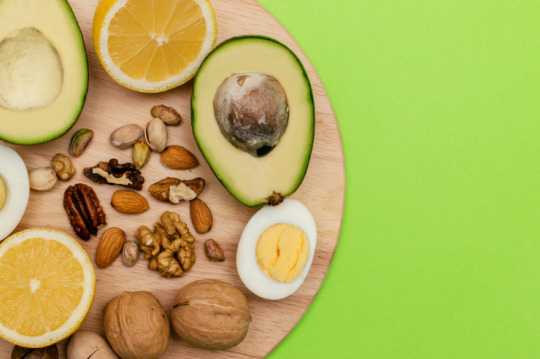
Normally, the body uses glucose as the main source of fuel for energy. When you are on a keto diet and you are eating very few carbs with only moderate amounts of protein (excess protein can be converted to carbs), your body switches its fuel supply to run mostly on fat. The liver produces ketones (a type of fatty acid) from fat. These ketones become a fuel source for the body, especially the brain which consumes plenty of energy and can run on either glucose or ketones.
When the body produces ketones, it enters a metabolic state called ketosis. Fasting is the easiest way to achieve ketosis. When you are fasting or eating very few carbs and only moderate amounts of protein, your body turns to burning stored fat for fuel. That is why people tend to lose more weight on the keto diet.
Benefits Of The Keto Diet
The keto diet is not new. It started being used in the 1920s as a medical therapy to treat epilepsy in children, but when anti-epileptic drugs came to the market, the diet fell into obscurity until recently. Given its success in reducing the number of seizures in epileptic patients, more and more research is being done on the ability of the diet to treat a range of neurologic disorders and other types of chronic illnesses.
Neurodegenerative diseases. New research indicates the benefits of keto in Alzheimer's, Parkinson's, autism, and multiple sclerosis (MS). It may also be protective in traumatic brain injury and stroke. One theory for keto's neuroprotective effects is that the ketones produced during ketosis provide additional fuel to brain cells, which may help those cells resist the damage from inflammation caused by these diseases.
Obesity and weight loss. If you are trying to lose weight, the keto diet is very effective as it helps to access and shed your body fat. Constant hunger is the biggest issue when you try to lose weight. The keto diet helps avoid this problem because reducing carb consumption and increasing fat intake promote satiety, making it easier for people to adhere to the diet. In a study, obese test subjects lost double the amount of weight within 24 weeks going on a low-carb diet (20.7 lbs) compared to the group on a low-fat diet (10.5 lbs).
Type 2 diabetes. Apart from weight loss, the keto diet also helps enhance insulin sensitivity, which is ideal for anyone with type 2 diabetes. In a study published in Nutrition & Metabolism, researchers noted that diabetics who ate low-carb keto diets were able to significantly reduce their dependence on diabetes medication and may even reverse it eventually. Additionally, it improves other health markers such as lowering triglyceride and LDL (bad) cholesterol and raising HDL (good) cholesterol.
Cancer. Most people are not aware that cancer cells' main fuel is glucose. That means eating the right diet may help suppress cancer growth. Since the keto diet is very low in carbs, it deprives the cancer cells of their primary source of fuel, which is sugar. When the body produces ketones, the healthy cells can use that as energy but not the cancer cells, so they are effectively being starved to death. As early as 1987, studies on keto diets have already demonstrated reduced tumor growth and improved survival for a number of cancers.
Comparing Standard American, Paleo, & Keto Diets
(As a % of total caloric intake)
__________________________Carbs__________Protein_________Fat
Standard American Diet_____40-60%_________15-30%_________15-40%
Paleo Diet_________________20-40%_________20-35%_________25-50%
Keo Diet________________ __5-10%__________10-15%_________70-80%
The key distinction between the keto diet and the standard American or Paleo diets is that it contains far fewer carbs and much more fat. The keto diet results in ketosis with circulating ketones ranging from 0.5-5.0 mM. This can be measured using a home blood ketone monitor with ketone test strips. (Please know that testing ketones in urine is not accurate.)
How To Formulate A Keto Diet
1. Carbohydrates
For most people, to achieve ketosis (getting ketones above 0.5 mM) requires them to restrict carbs to somewhere between 20-50 grams (g)/day. The actual amount of carbs will vary from person to person. Generally, the more insulin resistant a person is, the more resistant they are to ketosis. Some insulin sensitive athletes exercising vigorously can consume more than 50 g/day and remain in ketosis, whereas individuals with type 2 diabetes and insulin resistance may need to be closer to 20-30 g/day.
When calculating carbs, one is allowed to use net carbs, meaning total carbs minus fiber and sugar alcohols. The concept of net carbs is to incorporate only carbs that increase blood sugar and insulin. Fiber does not have any metabolic or hormonal impact and so do most sugar alcohols. The exception is maltitol, which can have a non-trivial impact on blood sugar and insulin. Therefore, if maltitol is on the ingredient list, sugar alcohol should not be deducted from total carbs.
The level of carbs one can consume and remain in ketosis may also change over time depending on keto adaptation, weight loss, exercise habits, medications, etc. Therefore, one should measure his/her ketone levels on a routine basis.
In terms of the overall diet, carb-dense foods like pastas, cereals, potatoes, rice, beans, sugary sweets, sodas, juices, and beer are not suitable.
Most dairy products contain carbs in the form of lactose (milk sugar). However, some have less carbs and can be used regularly. These include hard cheeses (Parmesan, cheddar), soft, high-fat cheeses (Brie), full-fat cream cheese, heavy whipping cream, and sour cream.
A carb level less than 50 g/day generally breaks down to the following:
5-10 g carbs from protein-based foods. Eggs, cheese, and shellfish will carry a few residual grams of carbs from natural sources and added marinades and spices.
10-15 g carbs from non-starchy vegetables.
5-10 g carbs from nuts/seeds. Most nuts contain 5-6 g carbs per ounce.
5-10 g carbs from fruits such as berries, olives, tomatoes, and avocados.
5-10 g carbs from miscellaneous sources such as low-carb desserts, high-fat dressings, or drinks with very small amounts of sugar.
Beverages
Most people require at least half a gallon of total fluid per day. The best sources are filtered water, organic coffee and tea (regular and decaf, unsweetened), and unsweetened almond and coconut milk. Diet sodas and drinks are best avoided as they contain artificial sweeteners. If you drink red or white wine, limit to 1-2 glasses, the dryer the better. If you drink spirits, avoid the sweetened mixed drinks.
2. Protein
A keto diet is not a high protein diet. The reason is that protein increases insulin and can be converted to glucose through a process called gluconeogenesis, hence, inhibiting ketosis. However, a keto diet should not be too low in protein either as it can lead to loss of muscle tissue and function.
The average adult requires about 0.8-1.5 g per kilogram (kg) of lean body mass per day. It is important to make the calculation based on lean body mass, not total body weight. The reason is because fat mass does not require protein to maintain, only the lean muscle mass.
For example, if an individual weighs 150 lbs (or 150/2.2 = 68.18 kg) and has a body fat content of 20% (or lean body mass of 80% = 68.18 kg x 0.8 = 54.55 kg), the protein requirement may range from 44 (= 54.55 x 0.8) to 82 (= 54.55 x 1.5) g/day.
Those who are insulin resistant or doing the keto diet for therapeutic reasons (cancer, epilepsy, etc.) should aim to be closer to the lower protein limit. The higher limit is for those who are very active or athletic. For everyone else who is using the keto diet for weight loss or other health benefits, the amount of daily protein can be somewhere in between.
Best sources of high quality protein include:
Organic, pastured eggs (6-8 g of protein/egg)
Grass-fed meats (6-9 g of protein/oz)
Animal-based sources of omega-3 fats, such as wild-caught Alaskan salmon, sardines, and anchovies, and herrings. (6-9 g of protein/oz)
Nuts and seeds, such as macadamia, almonds, pecans, flax, hemp, and sesame seeds. (4-8 g of protein/quarter cup)
Vegetables (1-2 g of protein/oz)
3. Fat
Having figured out the exact amounts of carbs and protein to eat, the rest of the diet comes from fat. A keto diet is necessarily high in fat. If sufficient fat is eaten, body weight is maintained. If weigh loss is desired, one should consume less dietary fat and rely on stored body fat for energy expenditure instead.
(As a % of total caloric intake)
_________________________Maintain Weight_______Lose Weight
Carbs____________________5-10%________________5-10%
Protein__________________10-15%_______________10-15%
Fat from diet_____________70-80%_______________35-40%
Fat from stored body fat___0%___________________35-40%
For individuals who consume 2,000 calories a day to maintain their weight, daily fat intakes range from about 156-178 g/day. For large or very active individuals with high energy requirements who are maintaining weight, fat intakes may even exceed 300 g/day.
Most people can tolerate high intakes of fat, but certain conditions such as gallbladder removal may affect the amount of fat that can be consumed at a single meal. In which case, more frequent meals or use of bile salts or pancreatic enzymes high in lipase may be helpful.
Avoid eating undesirable fats such as trans fat, highly refined polyunsaturated vegetable oils, as well as high amounts of omega-6 polyunsaturated fats.
Best foods to obtain high quality fats include:
Avocados and avocado oil
Coconuts and coconut oil
Grass-fed butter, ghee, and beef fat
Organic, pastured heavy cream
Olive oil
Lard from pastured pigs
Medium chain triglycerides (MCTs)
MCT is a specific type of fat that is metabolized differently from regular long-chain fatty acids. The liver can use MCTs to rapidly produce energy, even before glucose, thus allowing an increased production of ketones.
Concentrated sources of MCT oil are available as supplements. Many people use them to help achieve ketosis. The only food that is uniquely high in MCTs is coconut oil. About two-thirds of the coconut fat is derived from MCT.
Who Should Be Cautious With A Keto Diet?
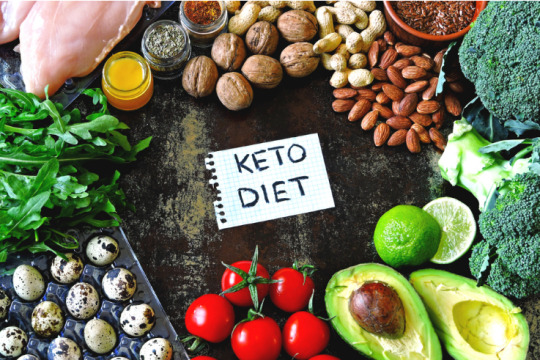
For most people, a keto diet is very safe. However, there are certain individuals who need to take special care and discuss with their doctors before going on such a diet.
Those taking medications for diabetes. Dosage may need to be adjusted as blood sugar goes down with a low-carb diet.
Those taking medications for high blood pressure. Dosage may need to be adjusted as blood pressure goes down with a low-carb diet.
Those who are breastfeeding should not go on a very strict low-carb diet as the body can lose about 30 g of carbs per day via the milk. Therefore, have at least 50 g of carbs per day while breastfeeding.
Those with kidney disease should consult with their doctors before doing a keto diet.
Common Concerns With A Keto Diet
Not being able to reach ketosis. Make sure you are not eating too much protein and there is no hidden carbs in the packaged foods that you consume.
Eating the wrong kinds of fat such as the highly refined polyunsaturated corn and soybean oils.
Symptoms of a "keto-flu", such as feeling light-headed, dizziness, headaches, fatigue, brain fog, and constipation. When in ketosis, the body tends to excrete more sodium. If one is not getting enough sodium from the diet, symptoms of a keto-flu may appear. This is easily remedied by drinking 2 cups of broth (with added salt) per day. If you exercise vigorously or the sweat rate is high, you may need to add back even more sodium.
Dawn effect. Normal fasting blood sugars are less than 100 mg/dl and most people in ketosis will achieve this level if they are not diabetic. However, in some people fasting blood sugars tend to increase, especially in the morning, while on a keto diet. This is called the "dawn effect" and is due to the normal circadian rise in morning cortisol (stress hormone) that stimulates the liver to make more glucose. If this happens, make sure you are not consuming excessive protein at dinner and not too close to bedtime. Stress and poor sleep can also lead to higher cortisol levels. If you are insulin resistant, you may also need more time to achieve ketosis.
Low athletic performance. Keto-adaptation usually takes about 4 weeks. During which, instead of doing intense workouts or training, switch to something that is less vigorous. After the adaptation period, athletic performance usually returns to normal or even better, especially for endurance sports.
Keto-rash is not a common side effect of the diet. Probable causes include production of acetone (a form of ketone) in the sweat that irritates the skin or nutrient deficiencies including protein or minerals. Shower immediately after exercise and make sure you eat nutrient dense whole foods.
Ketoacidosis. This is a very rare condition that occurs when blood ketone levels go above 15 mM. A well-formulated keto diet does not cause ketoacidosis. Certain conditions such as type 1 diabetes, being on medications with SGLT-2 inhibitors for type 2 diabetes, or breastfeeding require extra caution. Symptoms include lethargy, nausea, vomiting, and rapid shallow breathing. Mild cases can be resolved using sodium bicarbonate mixed with diluted orange or apple juice. Severe symptoms require prompt medical attention.
Is Keto Safe For Long-Term?
This is an area of some controversy. Though there have not been any studies indicating any adverse long-term effects of being on a keto diet, many experts now believe that the body may develop a "resistance" to the benefits of ketosis unless one regularly cycles in and out of it. In addition, eating a very high-fat diet in the long-term may not be suitable for all body types.
Cyclical keto diet
Once you are able to generate over 0.5 mM of ketones in the blood on a consistent basis, it is time to start reintroducing carbs back into the diet. Instead of eating merely 20-50 g of carbs/day, you may want to increase it to 100-150 g on those carb-feeding days. Typically, 2-3 times a week will be sufficient. Ideally, this is also done on strength training days on which you actually increase your protein intake.
This approach of cycling may make the diet plan more acceptable to some people who are reluctant to permanently eliminate some of their favorite foods. However, it may also lower resolve and commitment to the keto diet or trigger binges in susceptible individuals.
Carol Chuang is a Certified Nutrition Specialist. She has a Masters degree in Nutrition and is a Certified Gluten Practitioner. She specializes in Metabolic Typing and Functional Diagnostic Nutrition.
Visit Here >>> https://fitbitehealth.com//?s=keto+diet
2 notes
·
View notes
Text
T34 Heavy Tank
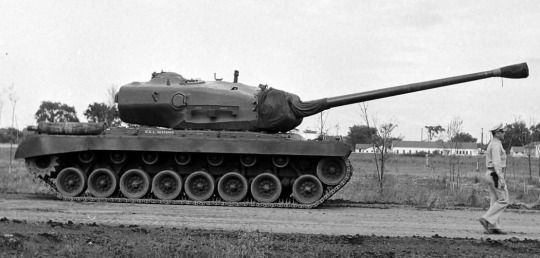
The variation of the T29 concept, the heavy tank T34, mounted a 120 mm gun based upon the then-current 120mm M1 anti-aircraft gun to further increase the armor penetration capability of the T29. This gun was designated as the 120 mm T53, which could achieve a maximum rate of fire of 5 rounds per minute with two loaders. With solid shot weighing 50 lb (23 kg), it had a muzzle velocity of 3,150 ft/s (960 m/s). A lightweight HVAP round with a muzzle velocity of 4,100 ft/s (1,200 m/s) was in development. In order to balance out the weight of the longer and heavier cannon, an additional 101 mm of armour was welded on the rear of the turret bustle. The end of the war curtailed further development, and only two prototypes were built. The experience gained with the T34 was valuable in the development of the M103 heavy tank.
More photos here.
#T34 Heavy Tank#Heavy Tank#tank#T34#US Army#Warfare#military#World War Two#World War 2#Second World War#Military#MilitaryHistory
0 notes
Text

Concept Art of the Aerojet M-1 rocket motor, the largest designed and partially tested.
"The M-1 traces its history to US Air Force studies from the late 1950s for its launch needs in the 1960s. By 1961 these had evolved into the Space Launcher System design. The SLS consisted of a series of four rocket designs, all built around a series of solid-fuel boosters and liquid-hydrogen-powered upper stages.
The smallest model, intended to launch the Dyna-Soar, used two 100-inch (2,500 mm) solids and an "A" liquid core. To power the "A" booster, Aerojet was contracted to convert an LR-87, used in the Titan II missile, to run on liquid hydrogen. A prototype was successfully tested between 1958 and 1960. Initial studies of the 100-inch (2,500 mm) solid were also handed to Aerojet, starting in 1959.
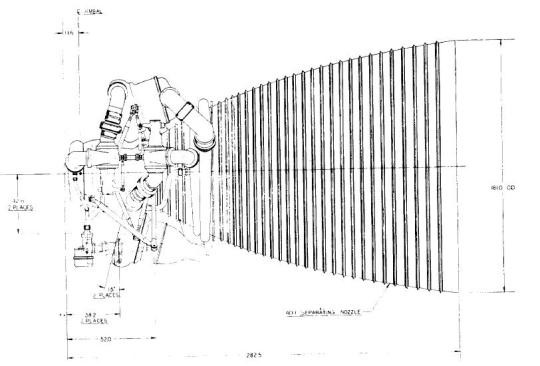
The SLS also envisioned a number of much larger designs intended to launch the Air Force's Lunex Project crewed lunar landing. Lunex was a direct landing mission, in which a single very large spacecraft would fly to the Moon, land, and return. In order to launch such a design to low Earth orbit (LEO), a very large booster with a 125,000 lb (57,000 kg) payload would be required. These larger SLS designs followed the same basic outline as the smaller Dynasoar booster, but used much more powerful 180-inch (4,600 mm) solids and the "B" and "C" liquid stages. To provide the required power, the liquid stages mounted a cluster of twelve J-2s. To reduce this complexity, the Air Force also had Aerojet start studies of a much larger hydrogen-fueled design that would replace the twelve J-2s with only two engines. These initial studies would eventually emerge as the M-1, with a thrust of 1.2 million pounds force.
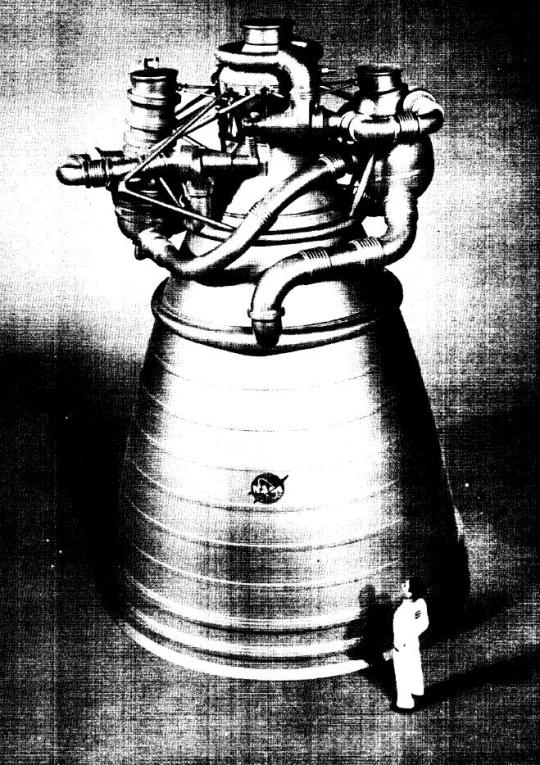
When NASA formed in 1958, they also started planning for a lunar landing. Like the Air Force, their Project Apollo initially favoured a direct ascent profile, requiring a large booster to launch the spacecraft into LEO. Prior to NASA taking over Wernher von Braun's Saturn work for the US Army, they had no large rocket designs of their own, and started a study program known as Nova to study a range of options. Initially, the payload requirements were fairly limited, and the favoured Nova designs used a first stage with four F-1 engines and a payload of about 50,000 lb (23,000 kg). These designs were presented to President Dwight D. Eisenhower on January 27, 1959.
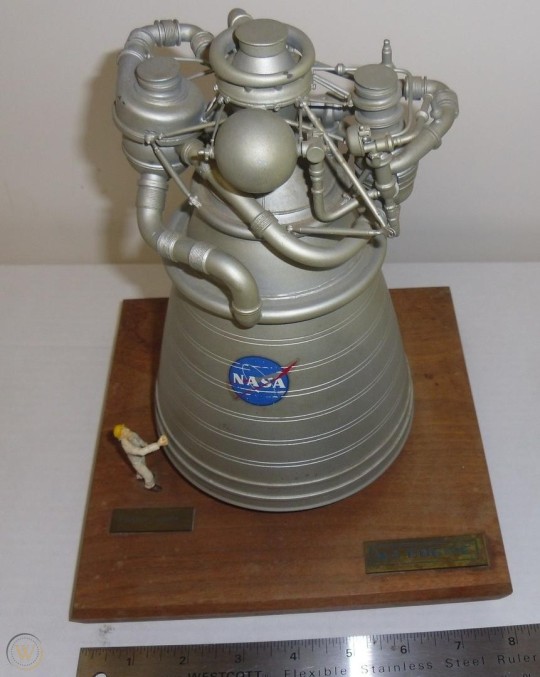

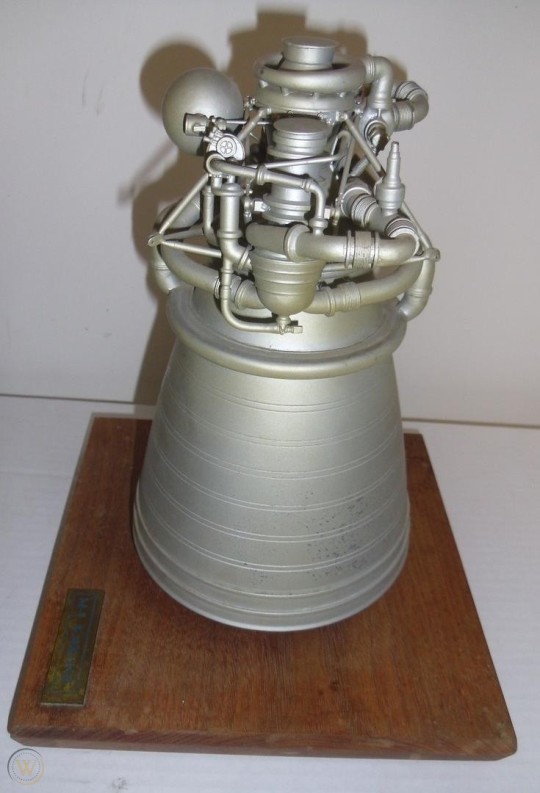
However, the Apollo spacecraft requirements quickly grew, settling on a 10,000 lb (4,500 kg) spacecraft (the CSM) with a three-person crew. To launch such a craft to the Moon required a massive 125,000 lb (57,000 kg) payload to LEO. Nova designs of this capability were quickly presented with up to eight F-1 engines, along with much more powerful upper stages that demanded the M-1 engine. Thus, for a brief period, the M-1 was used on the baseline designs for both NASA's and the Air Force's lunar programs.
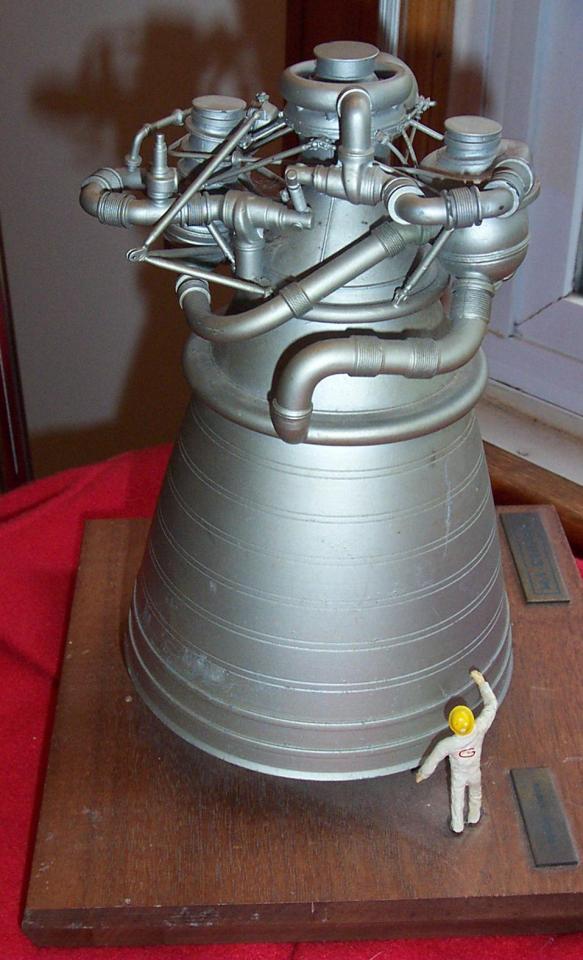
In 1961, President John F. Kennedy announced the goal of landing a person on the Moon before the decade was out. After a brief argument, NASA won the mission over the Air Force. However, Nova would require massive manufacturing capability that did not currently exist, and it was not clear that booster construction could be started in time for a landing before 1970. By 1962 they had decided to use von Braun's Saturn V design, which went through a process of re-design to produce a usable booster that could be built in the existing facilities at Michoud, Louisiana.

Uprating thrust, then cancellation
With the selection of Saturn for the lunar missions, work on Nova turned to the post-Apollo era. The designs were re-targeted for crewed planetary expeditions, namely a crewed landing on Mars. Even utilizing a lightweight mission profile like that selected for Apollo, a Mars mission required a truly massive payload of about one million pounds to low Earth orbit. This led to a second series of design studies, also known as Nova, although they were essentially unrelated to the earlier designs.
Many of the new designs used the M-1 as their second-stage engine, although demanding much higher payloads. In order to meet these goals, the M-1 project was uprated from 1.2 million pounds force to a nominal 1.5 million pounds force, and the designers deliberately added more turbopump capability to allow it to expand to at least 1.8 million and potentially up to 2.0 million pounds force. Additionally, the M-1 was even considered for a number of first-stage designs, in place of the F-1 or the 180-inch (4,600 mm) solids. For this role the specific impulse was dramatically reduced, and it appears that some consideration was given to various expanding nozzle designs to address this.
M-1 development continued through this period, although as the Apollo program expanded, NASA started cutting funding to the M-1 project in order to complete Saturn-related developments first. In 1965, another NASA project studied advanced versions of the Saturn, replacing the cluster of five J-2s on the S-II second stage with one M-1, five J-2Ts (an improved version of the J-2 with an aerospike nozzle), or a high-pressure engine known as the HG-3, which would later become the direct predecessor of the Space Shuttle's SSME.
By 1966 it was clear that present funding levels for NASA would not be maintained in the post-Apollo era. The Nova design studies ended that year, and the M-1 along with it. The last M-1 contract expired on August 24, 1965, although testing continued on existing funds until August 1966. Studies on the J-2T ended at the same time. Although the HG-3 was never built, its design formed the basis for the Space Shuttle Main Engine.

The final report (1966) found:
The feasibility of all major M-1 Engine components, except for the cooled chamber and the gas-cooled skirt, was demonstrated.
Performance data were obtained and the mechanical integrity was established for the injector, the fuel turbopump, the oxidizer turbopump, and the gas generator assembly. Also, it was established that these components are satisfactory for use in a demonstration engine.
Prototypes
Over the three-year lifetime of the project, a total of eight combustion chambers were built (two of them uncooled test units), eleven gas generators, four oxygen pumps, as well as four hydrogen pumps that were in the process of being completed.
Scaled down models of the pumps were used during design/development to 1963."
-Information from Wikipedia: link
source
47 notes
·
View notes
Text
Javascript convert string to date

#Javascript convert string to date how to#
If you are looking for more advanced date formats, then you will need to create a custom format yourself. toUTCString() gives you Fri, 13:06:28 GMT.toGMTString() gives you Fri, 13:06:02 GMT.toLocaleString() gives you, 2:05:07 PM.toDateString() gives you Fri Jul 02 2021.toString() gives you Fri 14:03:54 GMT+0100 (British Summer Time).Each of these methods gives you a specific value: The date object has about seven formatting methods. In case you are curious to try this out, here is the code:👇 new Date().toLocaleDateString('en-us', ) And I thought that this was the best way until I recently figured out that we don’t always need to use libraries to format dates in JavaScript. I discovered that most developers do this a lot. But it gets really weird whenever I do this in small projects that require simple date formats which JavaScript offers by default. To solve this issue, you can use TRY_CAST(), TRY_CONVERT() or TRY_PARSE() functions to check if the value can be converted or not, if so, the function will return the conversion result, else it will return a NULL value.For a long time, I've used libraries like Date-fns whenever I need to format dates in JavaScript. As an example, many times you may face bad date values such as “” these values cannot be converted and will throw a data conversion exception. One of the main issues of the data type conversion functions is that they cannot handle the erroneous value. TRY_CAST(), TRY_CONVERT() and TRY_PARSE() As an example, if we try to parse value without passing the culture information, it will fail since “dd/MM/yyyy” is not supported by the default language settings.īut, if we pass “AR-LB” as culture (Arabic – Lebanon), where “dd/MM/yyyy” is supported, the conversion succeeds: If the culture info is not specified, PARSE() acts similar to CAST() function, but when the culture is passed within the expression, the function tries to convert the value to the desired data type using this culture.
#Javascript convert string to date how to#
How to convert from string to datetime?.
SQL Server: convert string to date implicitlyĪs mentioned above, converting a data type implicitly is not visible to the user, as an example when you are comparing two fields or values having different data types:įor more information about CONVERT() function and date style numbers, you can refer to the following articles: Note: Before we start, please note that some of the SQL statements used are meaningless from the data context perspective and are just used to explain the concept. In this article, we will explain how a string to date conversion can be achieved implicitly, or explicitly in SQL Server using built-in functions such as CAST(), TRY_CAST(), CONVERT(), TRY_CONVERT() and TRY_PARSE().
Explicit where conversions are visible to the user and they are performed using CAST or CONVERT functions or other tools.
Implicit where conversions are not visible to the user data type is changed while loading data without using any function.
In general, there are two types of data type conversions: In SQL Server, converting a string to date can be achieved in different approaches. Converting these values to a date data type is very important since dates may be more valuable during analysis. While working with raw data, you may frequently face date values stored as text.

0 notes
Text

EXTRA: Lockheed B-12 (B-71)
In the early years of the OXCART Project, Kelly Johnson conducted some studies to evaluate the feasibility of developing some variants of her photographic recognition aircraft for USAF. The initial concept, evaluated by Lockheed, provided for the development of a bomber, which would be equipped with an internal weapons bay compartment, containing a carousel from which up to four free-fall tactical nuclear bombs could be dropped, weighing 400 lb (181 kg approx.) each.
FB-12-4 Blackbird Bomber schematic design – Lockheed Martin
The aircraft would be equipped with 2 AIM-7 E/F Sparrow missiles (with folding wings), in the front internal compartments, and 2 AGM-69 SRAM missiles in the rear internal compartments / Lockheed Martin
FB-12-4 Blackbird Bomber schematic design - Lockheed Martin (1)
The aircraft would be equipped with 2 AIM-7 E/F Sparrow missiles (with folding wings), in the front internal compartments, and 2 AGM-69 SRAM missiles in the rear internal compartments / Lockheed Martin
FB-12-4 Blackbird Bomber schematic design - Lockheed Martin (2)
The B-12 (FB-12-4) Blackbird would also be equipped with a carousel from which up to four tactical, free-fall nuclear bombs could be dropped, weighing 400 lb (181 kg approx.) each / Lockheed Martin
According to the initial studies, this weapons compartment would occupy the same space that, on the A-12, is dedicated to the Q Bay (pressurized compartment, behind the cockpit, where the high-resolution camera was installed). If there was a need for the use of larger weapons, additional space could eventually be obtained by reducing the size of the fuel tanks. With the exception of the access doors to the internal arms compartment, at the bottom of the fuselage, visually speaking, this new aircraft would be identical to the OXCART.
FB-12-4 Blackbird Bomber schematic design - Lockheed Martin (3)
In one of the proposed variants, the aircraft would also be equipped with a 20 mm M61 Vulcan / Lockheed Martin automatic cannon
The deterrent power provided by a small fleet of these bombers would be immense. Because of its enormous speed, the enemy would only detect the aircraft when it was too late, and most likely would not be able to shoot it down, or even intercept it.
On July 5, 1961, a life-size model of the front of the bomber, designated by Lockheed as B-12 (the names RB-12 and FB-12 were also assigned for the same project), was presented to General Curtis LeMay, who, having been very interested, asked if the aircraft could also be equipped with air-to-ground missiles, in addition to the associated avi Kelly Johnson responded favorably, having only pointed out that the development of a pure bomber would be a faster and easier solution, while the use of missiles would require, in addition to more time, further modifications in the overall structure of the set.
On October 26, 1961, the USAF's interest in the bomber was formalized through a memorandum sent to Lockheed, in which it was informed that the military designation of the B-12 would be B-71.
Kelly Johnson's proposal, however, was not accepted, having bumped into the interests of the Strategic Air Command (SAC), whose priority, at that time, was the North American B-70 Valkyrie development. USAF, however, requested Skunk Works to develop, based on OXCART, its own strategic reconnaissance aircraft, initially designated as R-12.
divide 1
IN THE NEXT CHAPTER: SENIOR CROWN Project
TEXT: Anderson LaMarca
Source:
Center for the Study of Intelligence – CIA
From Rainbow to Gusto: Stealth and the Design of the Blackbird by Paul A. Suhler
From Archangel to Senior Crown: Design and Development of the Blackbird by Peter W. Merlin
History of the OXCART Program by Clarence L. Johnson
Lockheed A-12: The CIA’s Blackbird and other variants by Paul Crickmore
Lockheed Blackbirds by Tony R. Landis and Dennis R. Jenkings
Lockheed SR-71: Operations in the Far East by Paul Crickmore
Lockheed U-2 Dragon Lady by Dennis R. Jenkings
Soviet Spyplanes of the Cold War by Yefim Gordon
IMAGES: Individually indicated credits
RESEARCH and EDITION: Cavok
READ AGAIN:
Part 1 - Origins
Part 2 - From clipboards to reality
Part 3 - The OXCART in action - CIA Secret Operations
Part 4 - Lockheed M-21/D-21, TAGBOARD Project
Part 5 - Lockheed YF-12 Interceptor, KEDLOCK Project
Tags: A-12BLACK SHIELDCIAConvairD-21usaCold WarHABUKEDLOCKKingfishLINEBACKERlockheedM-21NASAOXCARTSkunk WorksSR-71TAGBOARDUSSRYF-12
LaMarca
LaMarca
Related news
SPACE
How to watch the launch of SpaceX's powerful Starship rocket that takes place today
04/17/23 - 08:03
TECHNOLOGY
Final assembly of the X-59 supersonic plane progresses, with first flight scheduled for this year
14/04/2023 - 13:00
MILITARY
Pratt & Whitney F135: the engine that can't do its job
12/04/2023 - 09:00
MILITARY
B-52J will be the new designation for re-engined bombers
10/04/2023 - 09:28
A Mi-17 helicopter, part of Russia's recovery team, lands near the Soyuz MS-22 spacecraft on the Kazakhstan steppe on Tuesday. (Photo: Roscosmos)
SPACE
IMAGES: Damaged Soyuz MS-22 ship returns to Earth without crew
30/03/2023 - 08:26
SPACE
Russian Soyuz is ready to return to Earth on autopilot, without crew
26/03/2023 - 10:49
1 note
·
View note
Text
Naturehike P-Serie
Fonction anti-ultraviolet : le facteur de protection UV est de 50+, ce qui peut résister efficacement aux rayons ultraviolets sous le soleil brûlant, adapté aux activités de plein air telles que le camping, la randonnée et les voyages en famille.Conception du hall principal : l'espace devant la porte peut être agrandi en une pergola pour l'ombrage, élargissant l'espace confortable à l'extérieur de la tente ; conception de la porte à double sens et de la fenêtre de ventilation : favorise la circulation de l'air dans la tente.Matériau de haute qualité : la tente extérieure est en relief avec une armure toile en polyester 210T, qui est épaisse et durable, avec un indice d'étanchéité de 3000 mm ; la tente intérieure est en gaze respirante B3, et le fond de la tente est en tissu Oxford 150D, avec un indice d'étanchéité de 3000mm.Tente pour 2 personnes série P : taille dépliée : 200*(45+130+40)*100cm/78.7*(17.7+51.2+15.7)*39.4in ; taille de stockage : Φ16*49cm/Φ6.3*19.3in ; poids : Environ 2,1 kg/4,63 lb (accessoires compris).Tous les poteaux de tente en alliage d'aluminium, la tente intérieure est équipée d'un crochet simple, facile à construire, même si vous n'avez aucune expérience ; Le sac de rangement dans la tente peut stocker des téléphones portables, des mouchoirs et d'autres articles ; le crochet de la lampe dans la tente peut être utilisé pour accrocher des lumières pour l'éclairage.
0 notes
Text
Getting Started With Biking
I gave some advice about this in a previous post, but that was four years ago and there are some updates, especially about choosing the right bike. There’s been a lot of innovation and growth in the bike industry, so an update is in order.
Traffic Fear:-A major barrier for most people to biking outside is fear of motor vehicle traffic. Understandably so, it’s not comforting to share the road with heavy fast-moving vehicles. If we can’t overcome this barrier, we may as well stick to talking about indoor cycling. But there are ways to get past it:
People feel much safer on paths separated from traffic. If you’re fortunate enough to have those in your area, but don’t have a good route to get to them, you can always chuck your bike in the trunk or on a rack and drive to the start. I had friends who love to ride on our Coyote Creek trail but did not feel safe on the street so would just drive to the start of the trail. That’s a great way to start out. They’ve since moved further north, but if they were still here I’d have tried to also coax them out onto some of the safe pleasant streets of Morgan Hill they were missing out on.
Residential neighborhoods often have quieter traffic because drivers are careful about children that may be playing.
If you’re biking for any other reason other than commuting, it is much better at any other time than morning and evening rush hours. There are fewer vehicles and the drivers are more courteous and relaxed.
If you use bike lanes, and they are not as well thought out as the ones in Amsterdam or Copenhagen, you feel safe except at intersections. The issue of right-turning vehicles is the main one. This is less of an issue in my area because the bike lanes become dotted lines and often turn green, which alert both drivers and cyclists to the situation. Drivers will carefully look for bikes before merging into this turn lane. This is again much better at all times but rush hour, during which there can be aggravated and distracted drivers.
You can map out safe and pleasant routes with your car first and then later use them for bike outings. I feel safe riding on pretty much any road in my town, but some are a lot more pleasant than others. When I ride in our larger and busier neighbor to the north, San Jose, I stick to streets that I know are quieter and/or have well-designed bike lanes.
Choosing the right bike:
There are by now a bewildering amount of choices, and the advent of fairly lightweight electric bikes has added some other new alternatives. It is nice to see all this innovation for bikes geared towards us “regular” folks. Those that want high-end performance bikes have plenty of options, too, but they can find their own way. I want to help guide through the large array of choices for the rest of us. I gave some guidance on basic choices of bike types and comfort issues such as saddle design in a previous post. But there’s been rapid innovation in the four years since I wrote that. I happen to live in the town which has the World Corporate headquarters of Specialized bikes, and my great local bike shop is a Specialized dealer, so I’m a fan of them, so forgive me if I use them more in my examples. There are many worthy competitive brand like Giant, Trek, Cannondale, etc.
As a newcomer looking at comfortable and inexpensive bikes, there are more options. What was originally considered a comfort bike was a hybrid of road and mountain bikes. But now there are “plush” road bikes, such as the Specialized Roubaix, that have more relaxed geometry and work on rougher roads, and there is a new “gravel” bike category of bikes that can handle even rougher terrain. Technology from these bikes is trickling down to lower end bikes.
A good piece of now-mature technology is hydroformed aluminum, which allows lightweight, inexpensive, but attractive aluminum frames to be prevalent. And good quality carbon frames have also come down in price.
A really good piece of tech that is much more prevalent and inexpensive is disk brakes. These have better stopping power, even in the wet, but add little weight. And they allow much wider tires to be used. My Sirrus has 38 mm tires on it, that allow me to go on some seriously rough surfaces, but it still rolls fast enough on the roads so I can keep up on group rides. But just by getting a spare set of narrower road oriented tires, and adding on some inexpensive clip-on aerobars, I could easily make it faster on the road if I wanted to do a time trial. This versatility without breaking the bank is nice, and disk brakes make it possible. You can get a quality lightweight bike with disk brakes and decent components new for about US $800.
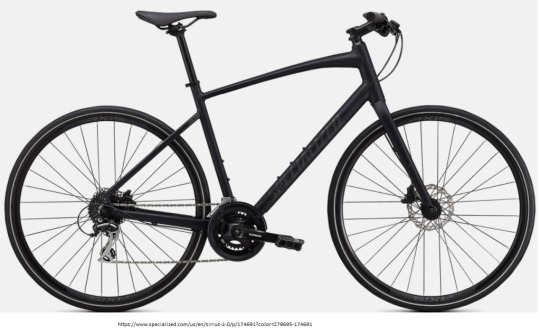
Example of an good lightweight inexpensive hybrid bike- Specialized Sirrus 2.0
I mentioned “crank forward” bikes like the Electra Townie in my previous post. These are a great option for beginners, because you can put your feet on the ground without getting off the saddle so it feels more secure. Trek has acquired Electra and has kept this line quite active. There are also many good electric assist versions of Townies now.
By far the biggest change has been the surge in popularity of electric bikes. Manufacturers have also done a great job of smoothly integrating elecric-assistinto the frame design. And now local bike shops will enthusiastically support them. I especially like the advent of more lightweight ebikes like the Specialized “SL” series. These are not as powerful as some of the larger heavier motors, but plenty good enough to do the job. I like the Specialized concept of “2X you”: The lighter weight motors can match your power up to one hundred percent. So when you’re riding it feels suddenly like you’re twice as powerful. These are still not feather-weight Tour de France bikes, but can get down below 30 lbs. total weight for the bike. That’s reasonable to lift onto a bike rack or into a trunk, which many of my local group of older riders routinely do. These bikes allow riders of widely varying abilities to ride together. Some have regular bikes, some have ebikes and use less assist, and some use more assist. The great equalizer. The main problem with these bikes is still price. They’re getting better, so you can get a name brand model starting about US$3000, but that still high for a lot of people. It’s a lot more affordable if you’re using it instead of a car, though.
Support for electric bikes is of major importance, and that is covered nicely if you buy a name brand at a bike shop, they’ll take good care of it for you. It is a reason I would not recommend getting an add-on electric assist kit unless you have someone locally that can work on it or are clever enough to work on the electrics yourself. My electric assist kit served me well for two years, I had fun, and put lots of miles on it. Then I started to have issues, and my local bike shop, and others in the area, did not want to touch it, and I had bought it from someone fifty miles away. I tried fixing it myself and was unsuccessful. An ebike may well be in my future when I need help keeping up, but I’ll only do it when I can get it from a local shop.
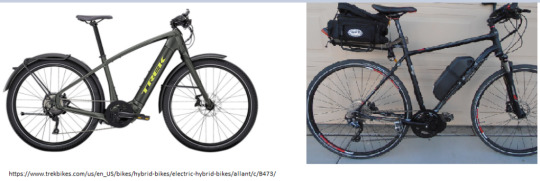
Example of the clean look of modern electric bikes. A factory Trek Alliant 8s, left, vs my Trek hybrid with a kit.
I have found a good website with bike information and reviews for various bike categories, which I recommend trying out. This site has good reviews of various bikes, and some nice rider stories.
Comfort Issues
There hasn’t been too much change in this area since my previous post. The most important point is that there is a tradeoff between comfort and speed. A lot of changes to make your position on the bike more aerodynamic also make you more “hunched over”. I’m to the point where upright and comfortable is more important these days, as long as I can keep up on group rides. But electric assist gets rid of this trade-off. You can be as upright as you like, kick in with a little assist, and be just as fast.
And there is always the option of a recumbent. I’d recommend trying out a nice upright setup on a hybrid, including a crank-forward one like the Townie, first. And give your butt a little time to adjust. I got back into biking after a more than 20 year absence when I got arthritis. I’d been an avid rider, then switched to running, then came back. During that 20 years my butt had completely forgotten that it is ok to be on a saddle. I started out with a decent hybrid and comfortable saddle. On my first ride my butt was whining within 5 minutes. I gutted it out for half an hour, and went home demoralized thinking about selling the bike. But I went out the next time and made it 35 minutes. Within about a week it wasn’t so bad, within two weeks I was fine.
I recommend going through this trial because there is a lot of convenience to having a local bike shop for conventional bikes. If you are lucky enough to have a local recumbent dealer that is a fine option too (mine is over sixty miles away).
But I do love my recumbent, too, and am willing to tinker with it myself to have it as an option. They can be a great comfort choice for cruising around on. One other trade off is they are not the best for riding around town. For example, they’re a bit more awkward starting off on than a conventional bike, which is an issue if you have to stop at traffic signals. If I have an errand to run I grab my hybrid, not my recumbent. But for a long cruise, the recumbent calls to me… If you want to learn more about these, here’s a couple of links:
bentrider online
recumbents
There a lot of different configurations with recumbents, starting with the issue of tricycles vs bicycles. For example, there is short wheelbase (with the cranks out in front of the forks, like mine, or long wheelbase. The former take up less room and are easier to store and transport. The book The Recumbent Bicycle by Gunnar Fehlau, is a great overview. It’s a little dated, from 2004, but you can get the latest details from the two sites above. I think you can see why I recommended a local bike shop and uprights first. Unless you have a local recumbent dealer, recumbents are a rabbit hole you can disappear down (or a fascinating hobby, depending on your point of view).
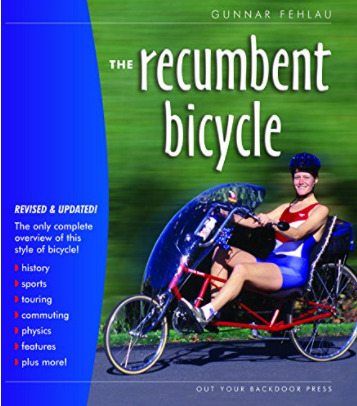
Easy Racer Long Wheelbase recumbent, a classic, comfortable ride. But try putting that in your trunk. (www.Amazon.com/books)
Getting Started With Biking published first on https://steroidsca.tumblr.com/
0 notes
